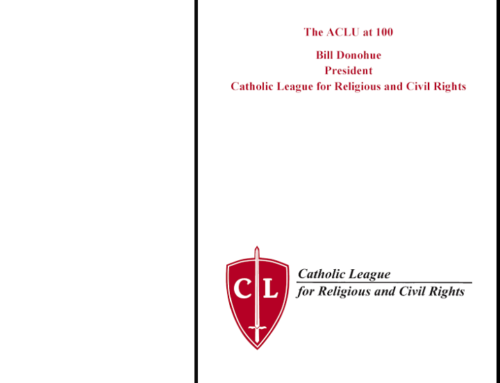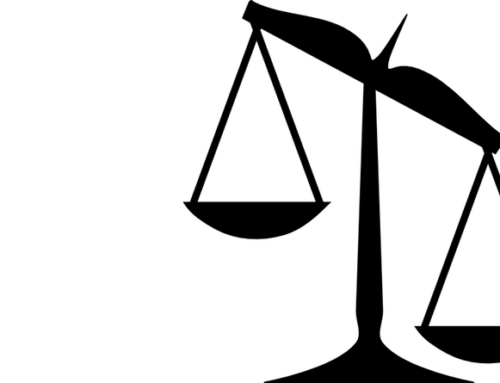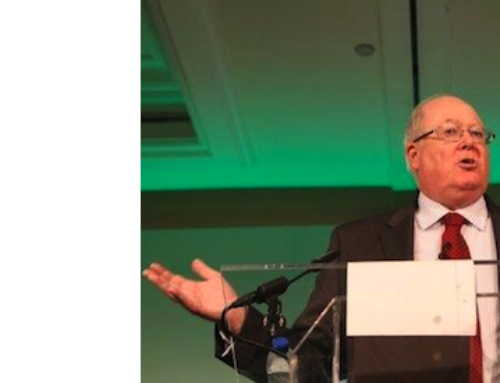Bill Donohue, Ph.D.
President
Catholic League for Religious and Civil Rights
August 16, 2018
Unlike most commentators and reporters, I have read most of the Pennsylvania grand jury report. The purpose of this statement is to debunk many of the myths, and indeed lies, that mar the report and/or interpretations of it.
Myth: Over 300 priests were found guilty of preying on youngsters in Pennsylvania.
Fact: No one was found guilty of anything. Yet that didn’t stop CBS from saying “300 ‘predator priests’ abused more than 1,000 children over a period of 70 years.” These are all accusations, most of which were never verified by either the grand jury or the dioceses.
The report, and CBS, are also wrong to say that all of the accused are priests. In fact, some were brothers, some were deacons, and some were seminarians.
How many of the 300 were probably guilty? Maybe half. My reasoning? The 2004 report by the John Jay College for Criminal Justice found that 4 percent of priests nationwide had a credible accusation made against them between 1950-2002. That is the figure everyone quotes. But the report also notes that roughly half that number were substantiated. If that is a reliable measure, the 300 figure drops to around 150.
During the seven decades under investigation by the grand jury, there were over 5,000 priests serving in Pennsylvania (this includes two dioceses not covered in the report). Therefore, the percent of priests who had an accusation made against them is quite small, offering a much different picture than what the media afford. And remember, most of these accusations were never substantiated.
Importantly, in almost all cases, the accused named in the report was never afforded the right to rebut the charges. That is because the report was investigative, not evidentiary, though the report’s summary suggests that it is authoritative. It manifestly is not.
The report covers accusations extending back to World War II. Almost all the accused are either dead or have been thrown out of the priesthood. For example, in the Diocese of Harrisburg, 71 persons are named: 42 are dead and four are missing. Most of those who are still alive are no longer in ministry.
There are some cases that are so old that they are unbelievable. Consider the case of Father Joseph M. Ganter. Born in 1892, he was accused in 2008 by an 80-year-old man of abusing him in the 1930s. Obviously, nothing came of it. But the priest was accustomed to such charges.
In 1945, at the request of Father Ganter, a Justice of the Peace interviewed three teenage males who had made accusations against him. Not only did they give conflicting stories, the three admitted that they were never abused by Ganter. But don’t look to the media to highlight this case, or others like it.
Myth: The report was warranted because of the on-going crisis in the Catholic Church.
Fact: There is no on-going crisis—it’s a total myth. In fact, there is no institution, private or public, that has less of a problem with the sexual abuse of minors today than the Catholic Church. How do I know?
Over the past two years, .005 percent of the Catholic clergy have had a credible accusation made against him. No one knows exactly what the figure is for other institutions, but if there were a grand jury investigation of the sexual abuse of minors in the public schools, people’s heads would explode—it would make the Catholic Church’s problems look like Little League. But no district attorney or attorney general has the guts to probe the public schools.
To single out the Catholic Church—without ever investigating any other institution—is akin to doing an investigation of crime in low-income minority neighborhoods while allowing white-collar crimes committed in the suburbs to go scot-free, and then concluding that non-whites are criminally prone. That would be a scam. So is cherry picking the Catholic Church.
Myth: The grand jury report was initiated to make the guilty pay.
Fact: False. It has nothing to do with punishing the guilty. Pennsylvania Attorney General Josh “Salacious” Shapiro admitted on August 14 that “Almost every instance of child abuse (the grand jury) found was too old to be prosecuted.” He’s right. But he knew that from the get-go, so why did he pursue this dead end?
Why did he waste millions of taxpayer dollars in pursuit of alleged offenders when he knew he couldn’t do anything about it? Because he, and his predecessor, Kathleen Kane (who is now awaiting prison for lying under oath and misusing her Attorney General’s office) wanted to shame the Catholic Church.
Kane and Shapiro have never sought to shame imams, ministers, or rabbis—they just want to shame priests. Nor will they conduct a probe of psychologists, psychiatrists, camp counselors, coaches, guidance counselors, or any other segment of society where adults routinely interact with minors.
Shapiro, and those like him, are delighted with all the salacious details in the report. When it comes to non-priests, news reports on sexual misconduct typically note that a sexual offense has occurred, but readers are spared the graphic accounts. Not when it comes to priests—they love to get as explicit as they can.
It’s not just Shapiro who is interested in appealing to the prurient interest of the public. The lead story in the August 15 edition of the New York Times is another case in point: on the front page there is a photo of a handwritten note by a young male who describes how and where a priest allegedly touched him. Yet when accusations surface against the likes of Harvey Weinstein, all that is noted is the nature of the offense.
Myth: Shapiro is seeking to right these wrongs by pushing for legislation that would suspend the statute of limitations for sexual crimes against minors, allowing old cases to be prosecuted.
Fact: This is one of the most bald-face lies of them all. Neither Shapiro, nor Pennsylvania lawmaker Mark Rozzi, who is proposing such legislation, has ever included the public schools in these proposed bills—they only apply to private [read: Catholic] institutions.
In most states, public school students have 90 days to report an offense. That’s it. Which means it is too late for a student raped by a public school teacher to file suit if the crime occurred this year at the start of the baseball season. Public institutions are governed under the corrupt doctrine of sovereign immunity, and few politicians have the courage to challenge it.
In the few instances where states have included the public schools in such legislation, guess who goes bonkers? The public school establishment. The teachers’ unions, school superintendents, principals—they all scream how utterly unfair it is to roll back the clock and try to determine if the accused is guilty of an offense that took place decades ago. They are right to do so; lucky for them they are rarely called to action.
The reason we have statutes of limitation is because many witnesses are either dead or their memories have faded. The public school industry understands the importance of this due process measure, and rightfully protests when it is in jeopardy. So why is it that when bishops make the exact same argument, they are condemned for obstructing justice? The hypocrisy is nauseating.
Myth: The priests “raped” their victims.
Shapiro said that “Church officials routinely and purposely described the abuse as horseplay and wrestling and inappropriate contact. It was none of those things.” He said it was “rape.” Similarly, the New York Times quoted from the report saying that Church officials used such terms as “horseplay” and “inappropriate contact” as part of their “playbook for concealing the truth.”
Fact: This is an obscene lie. Most of the alleged victims were not raped: they were groped or otherwise abused, but not penetrated, which is what the word “rape” means. This is not a defense—it is meant to set the record straight and debunk the worst case scenarios attributed to the offenders.
Furthermore, Church officials were not following a “playbook” for using terms such as “inappropriate contact”—they were following the lexicon established by the John Jay professors.
Examples of non-rape sexual abuse found in the John Jay report include “touching under the victim’s clothes” (the most common act alleged); “sexual talk”; “shown pornography”; “touch over cleric’s clothes”; “cleric disrobed”; “victim disrobed”; “photos of victims”; “sexual games”; and “hugging and kissing.” These are the kinds of acts recorded in the grand jury report as well, and as bad as they are, they do not constitute “rape.”
As for the accusation that Church officials described sexual misconduct as “horseplay,” one would think that there would be dozens of examples in the report where officials described what happened as nothing more than “horseplay,” especially if it is part of the Church’s “playbook.”
Here’s the truth: In over 1300 pages, the word “horseplay” appears once! To top it off, it was used to describe the behavior of a seminarian, not a priest.
Myth: The abusive priests were pedophiles.
Fact: This is the greatest lie of them all, repeated non-stop by the media, and late-night talk TV hosts.
There have been two scandals related to the sexual abuse of minors in the Catholic Church. Scandal I involves the enabling bishops who covered it up. Scandal II involves the media cover-up of the role played by gay molesters.
Let me repeat what I have often said. Most gay priests are not molesters, but most of the molesters have been gay. Not to admit this—and this includes many bishops who are still living in a state of denial about it—means the problem will continue. Indeed, there are reports today about seminaries in Boston and Honduras that are disturbing.
How do I know that most of the problem is gay-driven? The data are indisputable.
The John Jay study found that 81 percent of the victims were male, 78 percent of whom were postpubescent. Now if 100 percent of the victimizers are male, and most of the victims are postpubescent males, that is a problem called homosexuality. There is no getting around it.
How many were pedophiles? Less than five percent. That is what the John Jay study found. Studies done in subsequent years—I have read them all—report approximately the same ratio. It’s been a homosexual scandal all along.
It won’t help to say that the John Jay report did not conclude that homosexuals committed most of the offenses, even though their own data undercut their interpretation. The professors played the self-identity game: they said that many of the men who had sex with adolescent males did not identify as gay. So what?
If a straight priest who abused a teenage girl said he thinks of himself as gay, would the researchers list him as such? Self-identification that does not square with the truth is a lie. I recently spoke to a person in the media about this. I told him that I consider myself to be a Chinese dwarf—even though it is obvious that I am a big Irishman—and asked if he would describe me that way in his story. He got my point.
Shapiro fed the myth about this being a “pedophile” scandal when he said the victims were “little boys and girls.” This is a lie. Anyone who actually reads the report knows it is a lie. Most were postpubescent. This doesn’t make the molestation okay—the guilty should be imprisoned—but it is wrong to give the impression that we are talking about 5-year-olds when more typically they were 15-year-olds.
The New York Times, which has been covering up for homosexuals for decades, found it convenient to highlight the minority of cases where females were allegedly abused. So did many in the media who take their talking points from the Times.
The Times is so dishonest that it mentions a “sadomasochistic clerical pedophile ring in Pittsburgh that photographed boys they had posed to look like Jesus Christ, then gave them gold crosses to show they had been groomed.” The section of the report that discusses this alleged offense cites Father Gregory Zirwas as the ringleader.
Every person whom he groped was a teenager, meaning this was a homosexual ring. But, of course, the unsuspecting reader doesn’t know this to be the case.
In short, this is a ruse: the Times wants the reader to believe that this is a pedophile problem, and that females are as much at risk as males, thus discounting homosexuality. This is patently untrue, but it feeds the lie that this is not a homosexual scandal. It also allows people like Anthea Butler, who calls God a “white racist,” to say, “The Catholic Church is a pedophile ring.”
Myth: Bishops who sent abusive priests back into ministry did so out of total disregard for the well-being of the victims.
Fact: This lie is perpetuated by the grand jury report when it ridicules bishops for having priests “evaluated” at “church-run psychiatric centers.” The fact is that in the period when most of the abuse occurred—the mid-1960s to the mid-1980s—almost all persons in authority who dealt with sexual offenses, in any institution, relied on the expertise of those in the behavioral sciences.
Quite frankly, it was a time when therapists oversold their level of competence, and many continue to do so. There were very few psychologists or psychiatrists at the time who didn’t overrate their ability to “fix” offenders. It was they whom the bishops relied upon for advice. Yet the media rarely hold them accountable for misleading Church lawyers and the bishops.
Myth: Cardinal Donald Wuerl is so guilty that he needs to resign.
Fact: This accusation, made by a CBS reporter, as well as others, is based on pure ignorance, if not malice. Shapiro played the same game when he lamented how “Bishop Wuerl” became “Cardinal Wuerl” after he allegedly “mishandl[ed] abuse claims.” This is a scurrilous statement.
No bishop or cardinal in the nation has had a more consistent and courageous record than Donald Wuerl in addressing priestly sexual abuse. Moreover, the grand jury report—even in areas that are incomplete and unflattering—does nothing to dispute this observation.
Why do I call Wuerl “consistent and courageous”? Because of Wuerl’s refusal to back down to the Vatican when it ordered him to reinstate a priest he had removed from ministry; this occurred in the early1990s when Wuerl was the Bishop of Pittsburgh. The Vatican reconsidered and agreed with his assessment.
Who, in or out of the Catholic Church, has ever defied his superiors, risking his position within the company or institution, over such matters? Wuerl did. Who in Hollywood or in the media has?
The people now attacking Wuerl are doing so for one reason: as the Archbishop of Washington, he is the biggest fish the critics have to fry.
Here’s one more nugget. Shapiro proved how dishonest he is when he refused to excise a baseless charge against Wuerl. There is a handwritten note in the report attributed to Wuerl about his alleged “circle of secrecy” involving a priest who was returned to ministry. But it is not Wuerl’s handwriting. More important, Wuerl’s legal counsel informed Shapiro that “the handwriting does not belong to then-Bishop Wuerl,” but nothing was done to correct the record. So they intentionally misled the public.
Conclusion
The guilty should pay, and the innocent should not. This is a pedestrian axiom that is being trashed today when it comes to assessing priestly misconduct, something the Pennsylvania grand jury report has contributed to mightily.
No amount of compassion for those who have been violated by priests should ever be done at the expense of telling the truth, no matter how unpopular it may sound. To do otherwise is cowardly, shameful, and unjust.
What is driving the current mania over this issue is not hard to figure out. I am a sociologist who has been dealing with this issue for a long time, having published articles about it in books and international journals.
Here is what’s going on. There are many vicious critics of the Catholic Church who would like to weaken its moral authority, and will seize on any problem it has to discredit its voice. Why? They hate its teachings on sexuality, marriage, and the family.
These very same people delight in promoting a libertine culture, one which ironically was the very milieu that enticed some very sick priests and their seminarian supervisors to act out in the first place.
There is nothing wrong with Catholic teachings on this subject: If priests had followed their vows, and not their id, we would not have this problem. Those who refuse to use the brakes God gave them, straight or gay, should be shown the gate or never admitted in the first place.








